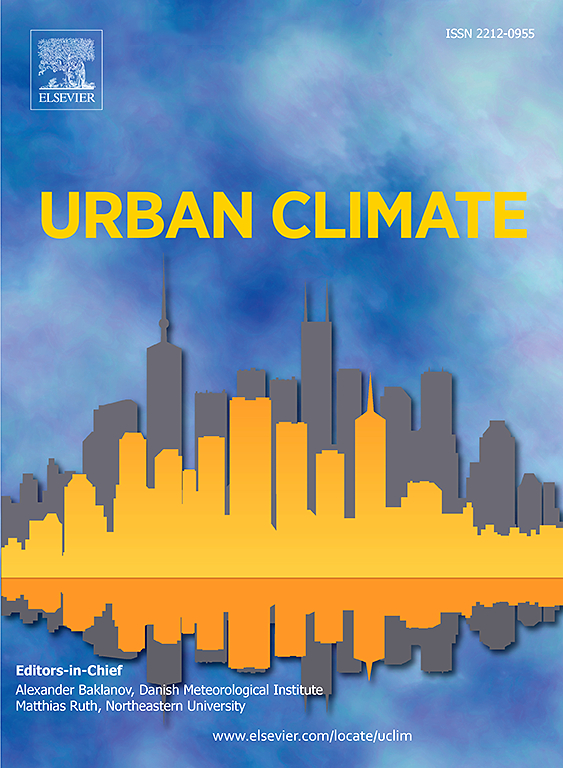Multiscale impacts of urban nature on land surface temperature over two decades in a city with cloudy and foggy climates
IF 6
2区 工程技术
Q1 ENVIRONMENTAL SCIENCES
引用次数: 0
Abstract
Rapid urbanization intensifies the urban heat island (UHI) effect and increases the frequency of extreme heat events, posing significant risks to urban environments and residents' well-being. While previous research has demonstrated that urban nature, particularly urban green spaces (UGS) and urban blue spaces (UBS), helps mitigate UHI, there is still a limited understanding of the spatiotemporal relationships between urban nature and land surface temperature (LST, an indicator of UHI) in cities with cloudy and foggy climates over many decades. This study leverages remote sensing data and applies the multiscale geographically weighted regression (MGWR) model to analyze the multiscale impacts of urban nature on LST in Chengdu, China, from 2000 to 2020. Our results show a consistent rise in LST levels over this period, alongside a reduction in UGS in both the city center and its surrounding areas. Additionally, urban nature consistently mitigates UHI at local scales over time. The mean coefficients of UGS were − 0.33, −0.28, −0.25, and ‐0.37 across four periods, while those of UBS were − 0.26, −0.30, −0.28, and − 0.21. These findings provide valuable insights into the multiscale role of urban nature in mitigating UHI, offering evidence to support policymakers in developing nature-based solutions to enhance thermal comfort.
多云和雾气候城市20多年来城市性质对地表温度的多尺度影响
快速城市化加剧了城市热岛效应,增加了极端高温事件的发生频率,给城市环境和居民福祉带来了重大风险。虽然以前的研究已经表明,城市自然,特别是城市绿地(UGS)和城市蓝色空间(UBS)有助于缓解热岛,但对几十年来多云和雾气候城市的城市自然与地表温度(LST)之间的时空关系的理解仍然有限。地表温度是热岛的一个指标。本研究利用遥感数据,应用多尺度地理加权回归(MGWR)模型,分析了2000 - 2020年成都市城市性质对地表温度的多尺度影响。我们的研究结果显示,在此期间,LST水平持续上升,同时城市中心及其周边地区的UGS减少。此外,随着时间的推移,城市性质在地方尺度上持续缓解城市热岛问题。UGS在四个时期的平均系数分别为- 0.33、- 0.28、- 0.25和- 0.37,而UBS的平均系数分别为- 0.26、- 0.30、- 0.28和- 0.21。这些发现为了解城市自然在缓解城市热岛问题中的多尺度作用提供了有价值的见解,为政策制定者制定基于自然的解决方案以增强热舒适提供了证据。
本文章由计算机程序翻译,如有差异,请以英文原文为准。
求助全文
约1分钟内获得全文
求助全文
来源期刊

Urban Climate
Social Sciences-Urban Studies
CiteScore
9.70
自引率
9.40%
发文量
286
期刊介绍:
Urban Climate serves the scientific and decision making communities with the publication of research on theory, science and applications relevant to understanding urban climatic conditions and change in relation to their geography and to demographic, socioeconomic, institutional, technological and environmental dynamics and global change. Targeted towards both disciplinary and interdisciplinary audiences, this journal publishes original research papers, comprehensive review articles, book reviews, and short communications on topics including, but not limited to, the following:
Urban meteorology and climate[...]
Urban environmental pollution[...]
Adaptation to global change[...]
Urban economic and social issues[...]
Research Approaches[...]
 求助内容:
求助内容: 应助结果提醒方式:
应助结果提醒方式:


